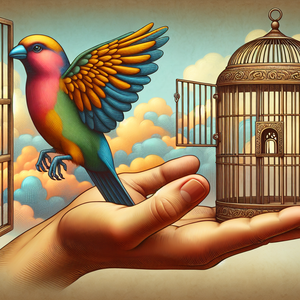Plaid and Perception: The Impact of Clothing Patterns on Career Advancement

Our clothing choices are powerful signals that convey messages about who we are and how we want to be perceived. Dr. Karen Pine, a psychologist and author of "Mind What You Wear," posits that clothing significantly influences others' perceptions. Different patterns evoke various responses; plaid, with its historical roots in both casual and formal attire, can be interpreted in multifaceted ways. In conservative workplaces, plaid may be seen as too casual, undermining perceptions of professionalism. Contrastingly, in creative environments, it can symbolize individuality, creativity, and confidence. For example, a survey conducted by the American Psychological Association revealed that individuals wearing non-traditional patterns, such as plaid, were often perceived as more approachable and innovative. This highlights the dual-edged nature of such clothing choices, where context plays a critical role in shaping perceptions.
Biases and Benefits of Plaid in Professional Settings
Understanding the dichotomy of plaid’s perception requires delving into the biases and benefits associated with this pattern in various professional realms. Sarah Thompson, an HR expert, notes that clothing can unconsciously affect how colleagues and supervisors perceive one another. "People often associate certain patterns with traits like reliability, creativity, or authority," she explains. "Plaid can project uniqueness while maintaining professionalism." However, biases are prevalent. In conservative industries such as finance or law, wearing plaid may lead to assumptions about an individual’s seriousness or commitment to the job. For instance, a candidate interviewing for a corporate role may face skepticism for choosing a plaid shirt over a standard suit. Conversely, in creative fields such as marketing or design, plaid can serve as a badge of innovation and fresh thinking. In a study published in the Journal of Occupational and Organizational Psychology, researchers found that employees who dressed in ways that aligned with their personal style, including patterns like plaid, reported higher job satisfaction and perceived professionalism. This suggests that the right choice of attire can enhance not only individual confidence but also the overall work environment.
Real-Life Examples: Success Stories in Plaid
To demonstrate the impact of plaid on career advancement, we share stories of professionals who have embraced this pattern, navigating their careers with success. Emily Chen, a graphic designer at a leading advertising agency, frequently incorporates plaid into her wardrobe. She believes that her style reflects her creativity, stating, "When I wear plaid, I feel confident and authentic, which helps me in meetings and presentations." Her colleagues perceive her as approachable and inventive, qualities that have significantly contributed to her rapid ascent within the company. Conversely, Michael Johnson, a senior executive at a traditional finance firm, initially conformed to the industry's conservative dress code. However, after a successful presentation in a subtle plaid tie, he noticed a marked shift in how colleagues interacted with him. "It was like a lightbulb moment," he recalls. "The plaid made me stand out without compromising professionalism, and it opened doors for more collaborative discussions." His story illustrates how a carefully selected piece of plaid can enhance professional interactions and foster an environment of openness.
Choosing to wear plaid in professional settings transcends mere personal style; it carries significant implications for how we are perceived and our potential for career advancement. As workplace dynamics evolve, understanding the impact of clothing patterns like plaid can empower professionals to strategically harness their visual identity. By navigating the balance between individuality and professionalism, individuals can leverage plaid to enhance their presence and seize new opportunities in the workplace. Ultimately, the journey of plaid from a traditional pattern to a symbol of personal branding underscores the dynamic relationship between attire and professional success. As we continue to explore the intricate interplay of perception and clothing, one thing is clear: the right pattern can pave the way for meaningful career advancements and foster a more inclusive understanding of professionalism in the modern workplace.
Corporate Image Consultant
Consulting firms, personal branding agencies, and corporate training organizations
Core Responsibilities
Advise clients on appropriate professional attire to enhance their personal brand, tailored to their industry and career goals.
Conduct workshops on the psychological impact of clothing choices, helping professionals understand how their attire affects perceptions in the workplace.
Collaborate with HR departments to develop dress codes that balance professionalism with personal expression.
Required Skills
Strong understanding of fashion trends and their implications in various industries.
Excellent communication and interpersonal skills for client interactions and group presentations.
Experience in personal branding or corporate training.
Human Resources Development Specialist
Corporations, non-profits, and educational institutions
Core Responsibilities
Design and implement training programs that educate employees about the impact of attire on workplace dynamics and career advancement.
Analyze employee feedback regarding dress codes and attire perceptions to foster a more inclusive workplace culture.
Provide one-on-one coaching for employees preparing for interviews or presentations, focusing on attire choices.
Required Skills
Background in organizational psychology or human resources management.
Ability to analyze workplace culture and employee engagement metrics.
Strong facilitation and coaching skills.
Fashion Brand Marketing Manager
Fashion brands, marketing agencies, and retail companies
Core Responsibilities
Develop marketing strategies that highlight how clothing choices, including patterns like plaid, can influence professional success and personal branding.
Collaborate with design teams to create collections that resonate with target audiences seeking professional attire.
Analyze market trends and consumer feedback to tailor campaigns that promote the psychological benefits of specific clothing patterns.
Required Skills
Experience in fashion marketing or brand management.
Strong analytical skills to assess market trends and consumer behavior.
Creative thinking for campaign development and brand messaging.
Diversity and Inclusion Officer
Corporations, educational institutions, and NGOs
Core Responsibilities
Promote an inclusive workplace culture by addressing biases related to clothing and personal expression in professional attire.
Develop policies and training programs that educate employees about the importance of diverse expressions of professionalism.
Monitor and report on the effectiveness of inclusion initiatives, specifically related to clothing choices.
Required Skills
Strong background in human resources, diversity, and inclusion initiatives.
Excellent communication and advocacy skills to promote change within organizations.
Understanding of cultural sensitivities and how they relate to professional attire.
Psychologist Specializing in Occupational Behavior
Academic institutions, research organizations, and consulting firms
Core Responsibilities
Conduct research on the psychological effects of clothing patterns on workplace interactions and career advancement.
Provide consultations to organizations on how to foster a positive work environment through attire-related policies.
Publish findings in academic journals and present at conferences focusing on workplace psychology.
Required Skills
Advanced degree in psychology, particularly in organizational or social psychology.
Strong research and analytical skills, with experience in conducting surveys and studies.
Ability to communicate complex psychological concepts to non-experts.


